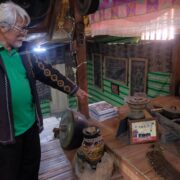Lake Sebu’s House of Gongs: Repository of Tboli culture
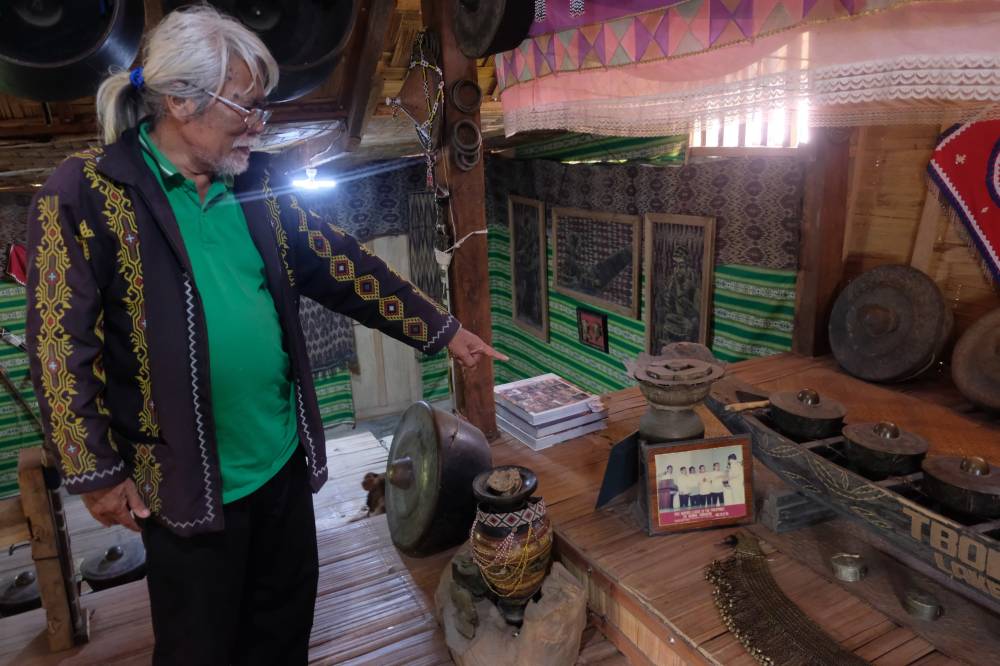
LAKE SEBU, SOUTH COTABATO—For about three decades now, the House of Gongs has been an avid listener to the soothing sounds of nature, sitting beside scenic Lake Sebu that gushes cool winds and resonates serene beauty.
The famed 354-hectare Lake Sebu, to which this town was named after, beckons from the privately owned museum that houses 80 gongs.
From Tboli Museum, the owner, Dominador Sen Baay, or Datu Bao, rightly changed its name to House of Gongs, hitting the message right away for tourists visiting this town, which for a long time has been associated with rich indigenous traditions, apart from its freshwater lakes and waterfalls.
Touted as the summer capital of South Cotabato for its cool climate all year round, Lake Sebu town is home to three Gawad Manlilikha ng Bayan (Gamaba) awardees or national living treasures for Tnalak weaving (Barbara Ofong), chanting (Rosie Sula) and brass casting (Bundos Fara). The first one, Lang Dulay also for Tnalak weaving, had passed away due to old age.
Gongs are known as “agongs” (or “agung”) among the Tboli and other indigenous groups in Mindanao.
Datu Bao, 65, became a gong collector by a twist of fate.

Heirloom
“I am not fortunate with animals. Many of the carabaos, cows and horses that I owned died. So I decided to collect gongs, as they don’t die. They may fade but they last forever,” he says in Filipino.
He started his gong collection from the several pieces that he inherited from his late father, Baay, who sired 30 children out of nine wives, an arrangement that is accepted in Tboli culture as long as the man could provide for their needs.
Their ancestors used to live along the coasts of Kiamba, Sarangani, where traders brought the gongs and other goods from the neighboring countries of Brunei, Malaysia and Indonesia to be sold to the locals, he recalled.
Over time, Datu Bao amassed not only gongs but also other collections, such as china, kulintang, brass wares and traditional Tboli attire made of Tnalak, that are displayed at his museum.
His museum follows the traditional rectangular long-house design of the Tbolis, called “gunu bong,” although a bit modern since it is elevated using concrete.
Datu Bao, who served as vice mayor of this town for three terms from 1992 to 2001, says he had spent at least P7 million from decades of collecting gongs, including during his travels in Southeast Asia.
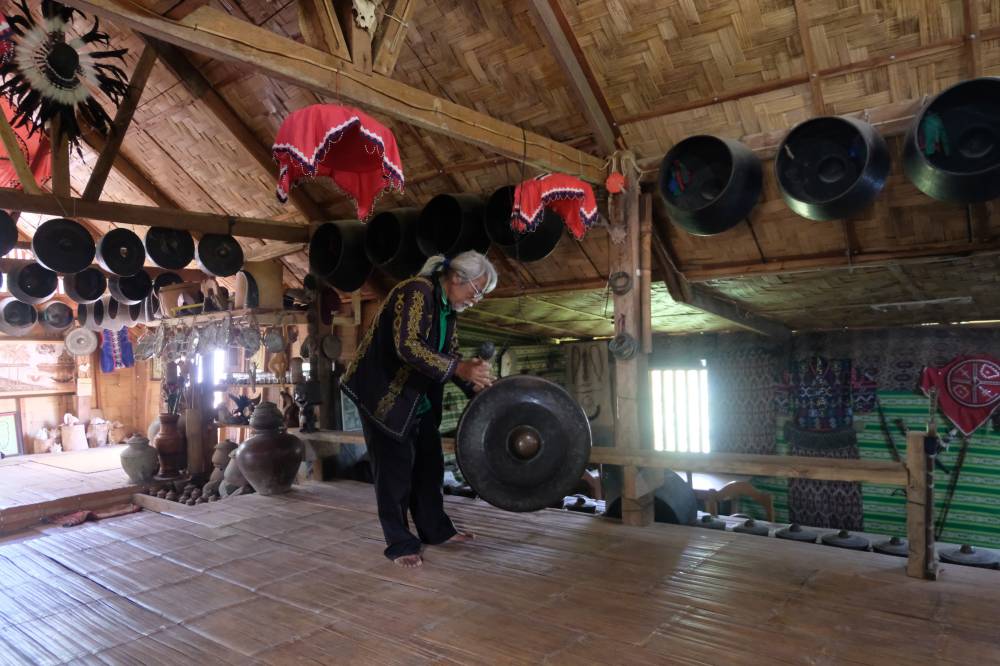
Prized piece
The gongs in his collection are mostly made in Brunei, Malaysia and Indonesia. He described the kulintang made in the country as smaller versions of gongs. Both are percussion instruments.
Datu Bao’s most prized collection is the gong that came from the sultanate of Brunei believed to have been made in the 17th century. It is displayed high up in the ceiling. Datu Bao recalls that they used to play hide and seek on it when they were still children.
In the Tboli tradition, the gongs are played during religious rituals, such as to implore for strong rains to stop, and during festivals to accompany the kulintang and other musical instruments.
Decades ago, way before mobile phones existed, gongs are used to issue calls for people to assemble for community meetings.
According to Datu Bao, the sound of a huge gong, like many in his collection, can be heard as far as 5 kilometers away.
Thickly made of brass and weighing at least 5 kilograms, his most expensive gong costs P100,000, while the rest ranges from P40,000 to P50,000 each.
“The gongs have become part of the Tboli culture. I built the House of Gongs to preserve our cultural heritage,” he tells the Inquirer.
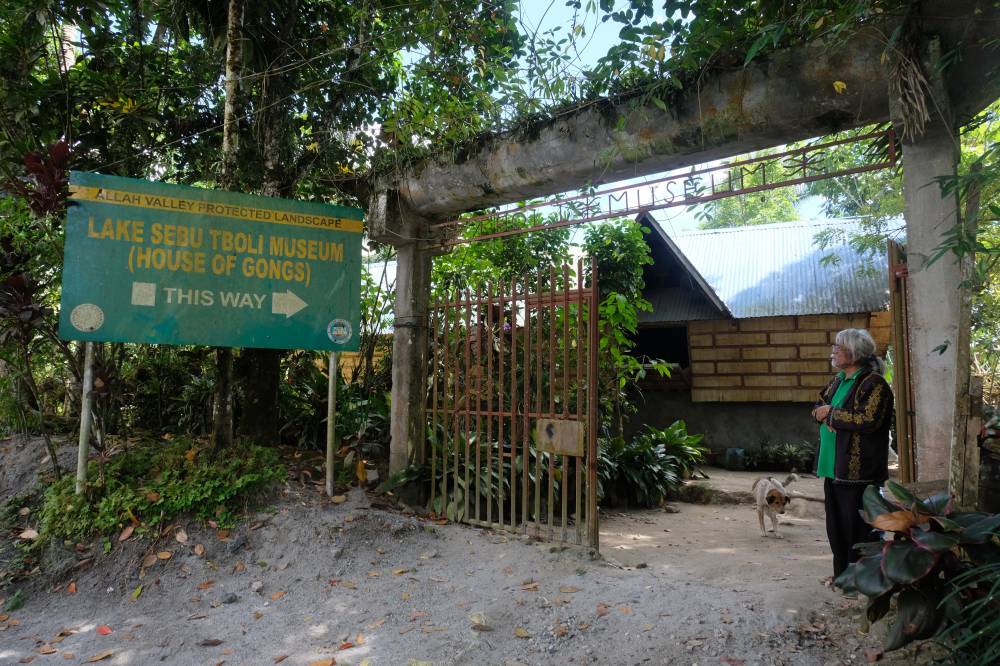
In their culture, Datu Bao notes that ownership of gongs is a symbol of wealth and royalty.
It is used by male members of families with royal blood for dowry in marriage, aside from horses and carabaos, he adds.
Datu Bao could have over 100 gongs in the museum, but his daughter brought some of them to Germany where she lives with her German husband, for display.
Since the House of Gongs started in 1998, tourists from Europe, the United States and Japan have visited the museum, although most of the visitors are locals, including students who make the trip as part of their educational tour.
It is conspicuously located along the road going to popular resorts and restaurants operating along Lake Sebu, hence visitors can just walk in.
The House of Gong, which is already part of the tourism circuit promoted by the Department of Tourism in Soccsksargen, is open daily from 6 a.m. to 6 p.m. There is no entrance fee but visitors are encouraged to donate whatever amount for the upkeep of the museum.
Two workers keep watch over the House of Gongs, the only one of its kind in the country, according to Datu Bao.
“It’s also the only private museum owned by an ordinary individual,” he jokes, noting that museums in the country are mostly owned by rich people.
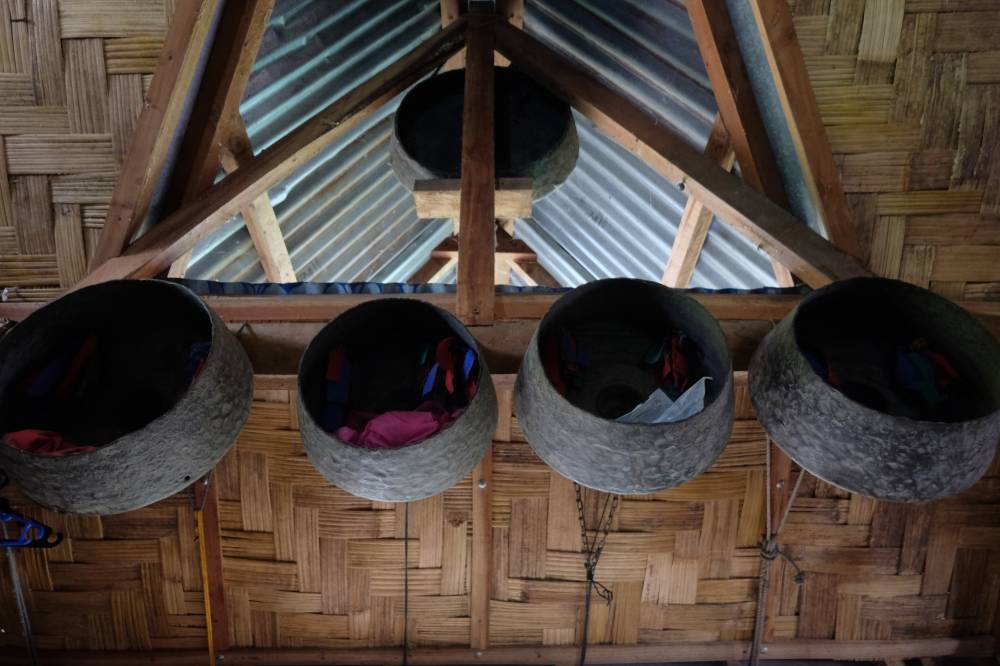
Datu Bao says he has no plans to sell his gongs as he believes there is a curse attached to the instrument if given up for a price.
His most favorite gong, named Sakam, gave him many blessings after he had acquired it, says Datu Bao, citing his good health and that money seems to just come if he’s short of it.
On the other hand, he says the chieftain who sold Sakam to him died after two weeks. “It seems there’s a curse that if you sell a gong, something bad will happen to you.”
Datu Bao pledges to high heavens that he will keep the House of Gongs until his last breath, and leave it as inheritance to his family whom he hopes will sustain it.











